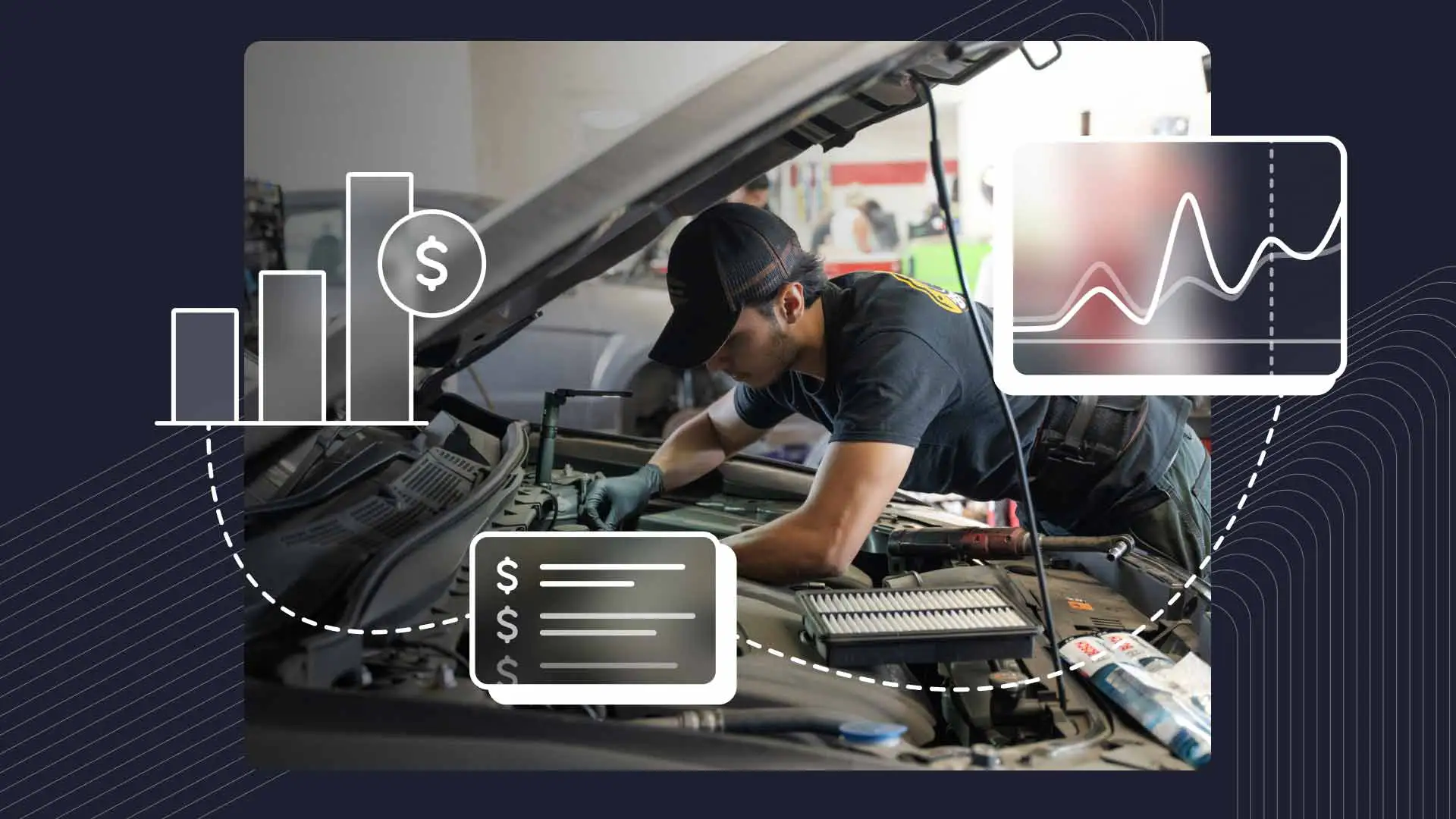Whether we’re talking safety, performance, or overall reliability, the right motorcycle tires can make all the difference.
Tires provide stability across varying speeds, surfaces, and conditions. They’re instrumental in handling, braking, cornering, and acceleration. In addition, the right pair wears evenly and lasts longer, helping riders avoid costly repairs and frequent replacements. And, they contribute to a smoother and more enjoyable trip by limiting excess noise and vibration.
With so much riding on proper tire selection, it’s important to make the right choice. This is where a knowledgeable motorcycle repair technician can be invaluable, steering customers toward the best tires by taking into account the type of bike, riding conditions, personal riding style, and a handful of other key factors.
Factors to Consider When Choosing Motorcycle Tires
1. Tire Type
Tires generally fall into two categories: radial and bias-ply. Radial tires have softer sidewalls and offer better stability, heat dissipation, longevity, and fuel efficiency, making them ideal for sport and touring bikes. Bias-ply tires, while less common, can be better for certain cruisers and off-road motorcycles because of their more rigid sidewalls.
Then, you have tubed vs. tubeless tires. Most modern motorcycles use tubeless tires, which are lighter, run cooler, and are more puncture-resistant and easier to repair. Tubed tires, while heavier and more prone to punctures, are often used with spoked wheels, so you’ll usually see them on older-style or off-road bikes.
Different riding styles call for different tire types. For example, sport tires offer excellent grip and handling; touring tires provide long tread life and comfort; and off-road tires feature more aggressive tread patterns for better traction in rough terrain.
2. Tire Size
The correct tire size can be found in the motorcycle's owner's manual, on its sidewall, or on the tire information placard, which is usually located on the steering head, seat post, or fender. Sizes are denoted by an alphanumeric code like "130/70 R 18 63 H," which tells the tire width, aspect ratio, rim diameter, load rating, and speed rating (more on these last two in a bit).
It's always best to match the front and back motorcycle tire sizes whenever possible. Running different sizes can affect the bike's handling and stability, especially when braking or cornering.
3. Tire Tread Pattern
Tire tread patterns are designed to suit different riding conditions. For example, tires meant for wet conditions often have deep grooves and sipes, or small slits in the tread blocks. These patterns help move water away from the contact patch, maintaining grip on slick surfaces and reducing the chances of hydroplaning. Conversely, tires designed for dry conditions generally have a less pronounced tread pattern with fewer and shallower grooves. This maximizes their contact with the road, providing better grip and stability.
Off-road tires typically feature deep, aggressive, and widely spaced tread blocks or lugs. These help the tire dig into loose surfaces like dirt, mud, and gravel, providing added traction and preventing the tire from getting clogged up with debris. Sport tires usually have minimal tread, but they may feature a unique design on the edges to provide better traction during cornering.
Tread depth impacts performance–and safety–as well. New tires typically have 1/8 inch of tread, but anything under 1/16 inch could compromise traction and braking performance. When tread depth hits 1/32 inch or less, it’s time for replacement.
4. Tire Construction
A tire includes the tread, sidewall, bead, and carcass. The tread makes contact with the road and provides traction and control. The sidewall supports the bike’s weight by offering lateral stability. The bead connects the tire to the wheel. And the carcass, or foundation of the tire, holds the other components in place.
Different materials and construction affect tire wear and performance, too. For example, tires with a single-compound tread offer excellent grip but may wear faster, while those with a dual-compound tread provide longer tread life but slightly less grip.
5. Tire Load Index and Speed Rating
These ratings are important: The motorcycle tire load index tells you the maximum weight the tire can support, while the speed rating shows the maximum speed at which the tire can safely operate. These figures typically appear together, with a number representing the load index followed by a letter for the speed rating. For example, if a tire is designated “60 H,” that means it can carry up to 551 lbs., and travel up to 130 mph in conditions specified by the manufacturer.
6. Tire Pressure
Maintaining the correct tire pressure ensures a safe, smooth, and fuel-efficient ride. Underinflated tires can overheat, potentially resulting in a blowout; overinflated tires can cause you to lose traction, and wear unevenly.
Tire pressure should be checked when the tires are cold, i.e., when the motorcycle has been parked for at least three hours. Use an accurate gauge, and compare the pressure to the manufacturer’s recommended level, which should be in the owner’s manual or on the placard. Experts advise checking tire pressure at least once a week, and before long trips.
7. Individual Preferences
Ultimately, the best tire is one that matches the customer’s preferences and riding style. Ask questions about their typical routes and riding conditions (wet, dry, twisty roads, urban commuting, etc.), the type of riding they do most often, and of course, their budget. Also, determine whether their priorities are tread life, grip, fuel efficiency, or something else. You should be able to recommend appropriate tires based on the customer’s feedback.
Setting Customers On the Right Track
Helping customers select the best motorcycle tires begins with educating them on key factors, how these factors affect safety and performance, and the importance of making the right choice. Providing personalized tire recommendations based on their riding style, budget, and preferences will narrow down the options even further. And remember, always take the time to answer any questions they might have, and show them how to properly care for their tires once they’re installed and ready to go.
Applying the information in this guide will help you point customers in the right direction. And, to help free up more of your time for personalized service and recommendations, consider adding Shopmonkey’s motorcycle repair software to your toolbox. Request a free demo today!




